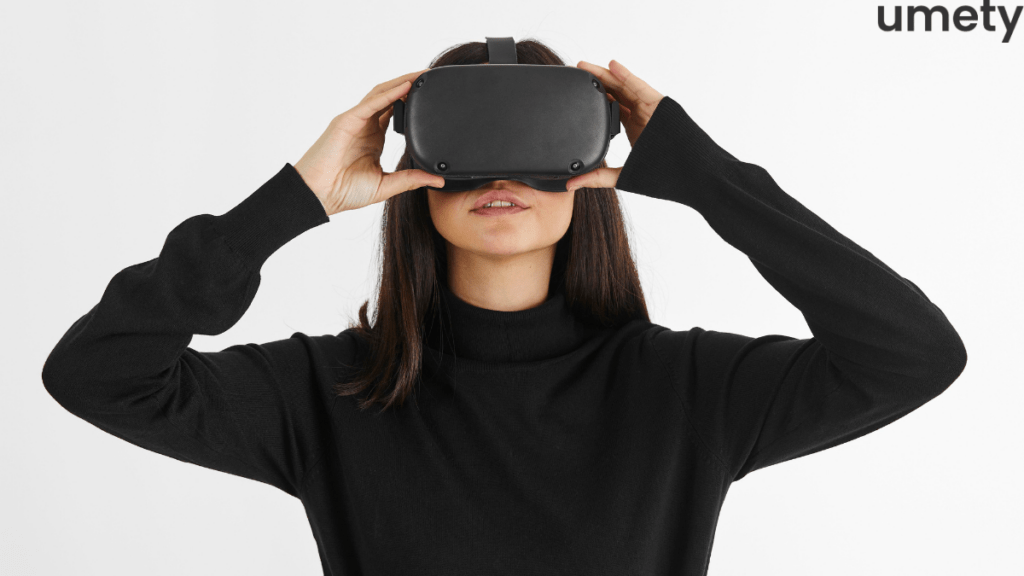
How VR Headsets are Changing the Way We Experience the World

In a world where technology constantly evolves, one innovation has captured the imagination of millions and come into the spotlight. It is reshaping the way we perceive and interact with our surroundings – Virtual Reality headset. VR has become a tangible and transformative tool changing how we experience the world around us. This blog will explore how these headsets make their way in a new era of sensory immersion and human interaction.
What are VR headsets?
Virtual Reality (VR) headsets are wearable devices that immerse users in a computer-generated, three-dimensional environment, simulating a sense of presence and interaction within that virtual space. These headsets typically consist of screens (displays) placed close to the eyes, motion sensors, tracking technology, and often built-in audio systems. They create a convincing illusion that the user is inside a virtual world, where their movements and actions can be tracked and responded to in real-time.
Key components of virtual reality headsets include:
- Display Screens: VR headsets feature high-resolution displays for each eye, creating a stereoscopic effect that gives a sense of depth and realism. These screens show the virtual environment and imagery.
- Motion Tracking: Sensors and cameras on the headset track the user’s head movements, allowing them to look around and interact naturally within the virtual environment. This tracking provides a crucial immersion element by adjusting the displayed visuals based on the user’s perspective.
- Positional Tracking: Some VR headsets also include positional tracking, which tracks the user’s entire body movements within a physical space. It allows users to walk around and interact with the virtual world as they would in real life.
- Controllers and Input Devices: Many VR systems come with handheld controllers or input devices that allow users to interact with objects and elements in the virtual space. These controllers often include buttons, triggers, and motion sensors.
- Audio Systems: Integrated headphones or speakers provide spatial audio, enhancing the sense of immersion by delivering sound from different directions based on the user’s position.
- Connectivity and Processing: Virtual reality headsets are connected to a computer or console that processes the virtual environment and sends it to the headset. Some standalone VR headsets have built-in processors, eliminating the need for external devices.
Unlocking a New Dimension
Imagine you put on a sleek headset, and suddenly, you’re transported from your living room to the bustling streets of the United States, the depths of a rainforest, or even a French cafe. VR headsets can transport users to entirely different worlds, offering a level of immersion and engagement that was once thought impossible. As soon as you don that headset, the boundaries of physical space dissolve, and you’re free to explore, create, and interact like never before.
Education Redefined
Education is one of the sectors that has embraced VR headsets with open arms. Imagine students being able to travel back in time to witness historical events, explore the far reaches of the universe, or even dive deep into the human body to understand its intricate workings. With VR, learning becomes an adventure, a hands-on experience beyond textbooks and lectures. Complex concepts are simplified, and engagement levels skyrocket as students actively participate in their learning journey.
Breaking Barriers to Entertainment
The entertainment industry is undergoing a seismic shift thanks to virtual reality headsets. Traditional forms of entertainment – movies, games, and even concerts – are being reimagined in once inconceivable ways. Gamers can step into their favorite virtual worlds and experience heart-pounding action as if they were in the midst of the adventure. Musicians can host virtual concerts where fans from around the globe gather in the same digital space to enjoy live performances—the line between spectator and participant blurs, offering a level of engagement that transcends screens.
Enhances Empathy and Social Change
VR has a unique power to evoke empathy and drive social change. Through VR experiences, users can walk in the shoes of others, experiencing their struggles, challenges, and triumphs firsthand. This immersive empathy has the potential to bridge gaps and foster understanding between diverse communities. Whether raising awareness about environmental issues or advocating for social justice, VR is a potent tool for sparking conversations and inspiring action.
Beyond Entertainment: Real-World Applications
While VR’s entertainment and educational aspects are undoubtedly captivating, the technology’s impact goes further. Industries such as healthcare are leveraging VR for medical training, therapy, and even surgical simulations. Architects and engineers use VR to visualize and refine designs before construction begins. Military personnel benefit from realistic training scenarios that enhance decision-making under pressure. The possibilities are limitless, and VR is versatile across numerous sectors.
As VR technology continues to evolve, we find ourselves at the cusp of a revolution that has the potential to redefine the human experience. The boundaries of reality are expanding, and with each innovation, VR headsets are pushing us closer to a future where the digital and physical worlds seamlessly intertwine. Whether exploring uncharted territories, unlocking the secrets of the past, or shaping a better future, VR headsets undeniably change how we perceive and interact with the world.
Future of Virtual reality
In a world driven by innovation, virtual reality headsets are a testament to humanity’s ability to create and shape new realities. These remarkable devices have transcended their initial promise and are now reshaping industries, enhancing learning, fostering empathy, and connecting people in ways previously unimaginable. As VR technology advances, one thing is clear: the future is virtual and brimming with possibilities that can reshape how we experience the world. So, gear up, step in, and get ready to explore the limitless horizons of virtual reality.